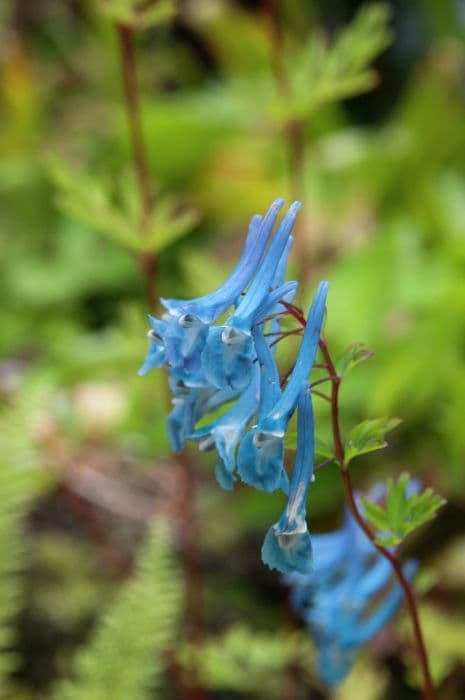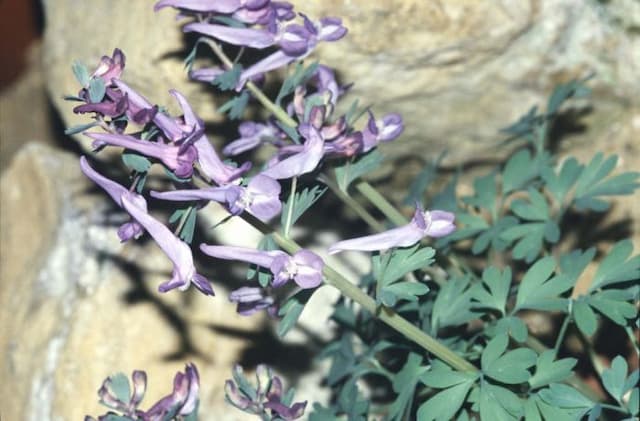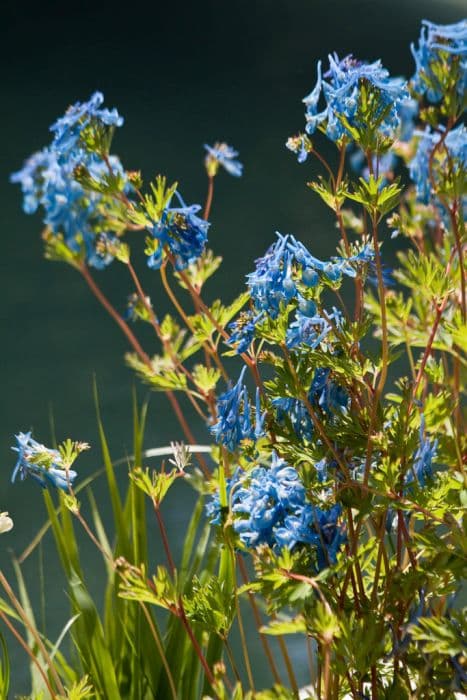California poppy 'Monarch Mixed' Eschscholzia californica 'Monarch Mixed'

ABOUT
'Monarch Mixed' is a compact, erect annual to 25cm tallwith feathery foliage and single or semi-double summer blooms in shades of pink, red, orange and yellow
About this plant
 Names
NamesFamily
Papaveraceae
Synonyms
California Poppy, Golden Poppy, California Sunlight, Cup of Gold
Common names
Eschscholzia californica.
 Characteristics
CharacteristicsLife cycle
Annuals
Foliage type
Deciduous
Color of leaves
Blue-green
Flower color
Mixed
Height
1 feet 2 inches (30-45 cm)
Spread
1 feet (30 cm)
Plant type
Herb
Hardiness zones
8-10
Native area
California
Benefits
 General Benefits
General Benefits- Low Maintenance: Eschscholzia californica, commonly known as California poppy, requires minimal care once established.
- Drought Tolerant: Well-suited to dry conditions, California poppy can thrive with infrequent watering.
- Attracts Pollinators: The flowers attract bees, butterflies, and other beneficial insects, supporting pollination.
- Easy to Grow: California poppy is considered easy to cultivate from seeds, making it accessible for gardeners of all skill levels.
- Colorful Display: 'Monarch Mixed' varieties offer a vibrant mix of flower colors that can enhance the visual appeal of gardens and landscapes.
- Self-Seeding: The plant can self-seed, ensuring a continual display of flowers year after year without additional planting.
- Pest Resistance: California poppy is not commonly affected by pests, reducing the need for chemical treatments.
- Edging and Ground Cover: Its low-growing habit makes it an excellent choice for edges, borders, and ground cover.
- Naturalizes Easily: It can spread and naturalize in an area, filling out spaces and creating a wildflower meadow effect.
- Seasonal Interest: The plant provides seasonal interest from spring to autumn with its flowers and foliage.
- Ecological Benefits: California poppy can play a role in local ecosystems by providing habitat and food for wildlife.
- Soil Stabilization: Its root system can help stabilize soil and prevent erosion in certain areas.
- Non-Invasive: Unlike some wildflowers, California poppy is considered non-invasive in most regions, making it a responsible choice for gardening.
 Medical Properties
Medical Properties- Analgesic: Eschscholzia californica, or California poppy, has been traditionally used to relieve pain.
- Anxiolytic: The plant may have mild anxiety-reducing effects.
- Sedative: It is sometimes used to promote relaxation and encourage sleep.
- Antispasmodic: California poppy may help to alleviate muscle spasms and cramps.
 Air-purifying Qualities
Air-purifying QualitiesThis plant is not specifically known for air purifying qualities.
 Other Uses
Other Uses- California poppy seeds can be used as a garnish for foods like salads and pastries, providing a crunchy texture and visual appeal.
- The bright petals of the California poppy can be used as a natural fabric dye, creating vibrant oranges and yellows on textiles.
- Dried California poppy flowers can be incorporated into homemade potpourris, offering a splash of color and a mild scent.
- The flowers and leaves of the California poppy can be used in crafting, such as pressed flower art or botanical papermaking.
- California poppy petals can be used to infuse oils and vinegars, adding a slight floral note to culinary creations.
- The plant can be used in ornamental gardens to attract and support beneficial insects, such as bees and butterflies.
- California poppies can be used in landscape design for erosion control because their roots help stabilize the soil.
- The flowers can be captured in photograph and art for their aesthetic value, inspiring artistic creations and home decor.
- California poppy plants can be used as part of natural pest management strategies in gardens, as they are believed to repel certain pests.
- The seed pods can be used in dried floral arrangements, adding an interesting texture and shape to bouquets.
Interesting Facts
 Feng Shui
Feng ShuiCalifornia Poppy is not used in Feng Shui practice.
 Zodiac Sign Compitability
Zodiac Sign CompitabilityCalifornia Poppy is not used in astrology practice.
 Plant Symbolism
Plant Symbolism- Resilience: The California poppy, as a wildflower, is known for its ability to thrive in harsh conditions, symbolizing the strength and resilience to overcome challenges.
- Beauty: With its vibrant colors and delicate form, the California poppy is often associated with natural beauty, representing admiration and attraction.
- Rest: The California poppy has the nickname "cup of gold" and is often linked to the idea of sleep and relaxation, possibly due to its sedative properties.
- Transformation: As a flower that closes at night and reopens with the sunlight, the California poppy is symbolic of renewal and the idea that each day is a new opportunity.
- Remembrance: Poppies in general, including the California poppy, are known as symbols of remembrance for those who have been lost, particularly in war, due to their prolific growth in battlefields.
 Water
WaterCalifornia Poppy should be watered deeply but infrequently to encourage deep root growth. During the growing season, watering once a week with about 1-1.5 gallons of water per square yard is adequate, though this may vary based on climate and soil conditions. It is important to allow the soil to dry out between waterings, as California Poppies are drought-tolerant and excessive water or poor drainage can lead to root rot. During the rainy season or cooler months, you may not need to water at all if precipitation provides sufficient moisture.
 Light
LightCalifornia Poppy thrives in areas where they receive full sun for the majority of the day. The ideal spot for these plants is in an area that is exposed to at least 6 hours of direct sunlight daily, though they can tolerate some light shade. Avoid planting them in heavily shaded areas, as this can lead to poor flowering and weak growth.
 Temperature
TemperatureCalifornia Poppies perform best in temperate climates with temperatures ranging from 50 to 75 degrees Fahrenheit. They can tolerate a minimum temperature down to around 20 degrees Fahrenheit but prefer not to be exposed to prolonged periods of freezing weather. The ideal temperature range ensures optimal growth and flowering. They are not well-suited to extremely hot conditions, with temperatures consistently over 90 degrees Fahrenheit potentially stressing the plants.
 Pruning
PruningPruning is not typically required for California Poppy; however, deadheading, or removing spent flowers, can encourage further blooming and prevent too much self-seeding. This can be done throughout the blooming period as flowers fade. There is no strict schedule for pruning these plants, and some gardeners prefer to leave the last blooms to allow the plants to self-seed for the next season.
 Cleaning
CleaningNot needed
 Soil
SoilCalifornia Poppy 'Monarch Mixed' thrives in well-draining, fertile soil with a pH range of 6.0 to 7.5. A mix of loamy soil, compost, and coarse sand or perlite is ideal to ensure good drainage and fertility. Regular amendments with organic matter can help maintain soil health.
 Repotting
RepottingCalifornia Poppies are typically grown as annuals and do not require repotting. Sow seeds directly in the ground or final containers where they are to bloom, as they prefer not to be transplanted due to their delicate taproot.
 Humidity & Misting
Humidity & MistingCalifornia Poppy 'Monarch Mixed' prefers low to moderate humidity levels, similar to its native dry and sunny California environments. They are drought-tolerant and do well in arid conditions.
 Suitable locations
Suitable locationsIndoor
Place in a sunny spot, minimal water, avoid high humidity.
Outdoor
Full sun, well-drained soil, water sparingly.
Hardiness zone
6-10 USDA
 Life cycle
Life cycleCalifornia poppy 'Monarch Mixed' begins its lifecycle as a seed, which when sown in well-drained soil and given enough warmth and light, germinates. Upon germination, the seedling emerges and, given adequate sunlight and water, develops into a young plant with true leaves, distinct from the initial seed leaves (cotyledons). The plant grows into a mature specimen sporting gray-green foliage and proceeds to produce its distinctive colorful flowers, typically ranging from orange to yellow and sometimes pink or white, depending on the variety. After pollination, which is often facilitated by insects, the flowers develop into elongated seed pods. These pods eventually dry and split open, releasing the small, black seeds to propagate the next generation. The California poppy is known to be an annual to short-lived perennial, so after setting seed, the individual plant may die, completing its life cycle, but the seeds have the potential to carry on the species in subsequent seasons.
 Propogation
PropogationPropogation time
Spring to early summer
The most popular method for propagating California poppy 'Monarch Mixed' is by seed. These plants thrive when sown directly into well-drained soil, in a sunny location, after the danger of frost has passed in the spring. The seeds should be scattered thinly and covered lightly with soil, about 1/16 inch (approximately 1.5 mm) deep. Water gently and keep the soil moist until germination, which usually occurs within 2 to 3 weeks. California poppies are well-adapted to poor, dry soil conditions and generally do not require fertilization. They are self-seeding, so if allowed to mature and set seed, they may naturally propagate the following season.









